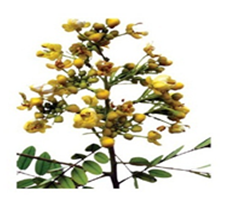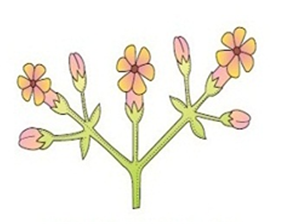 Long Answer Type
Long Answer TypeDefine the term inflorescence. Explain the basis for the different types inflorescence in flowering plants.
Inflorescence is the manner in which the flowers are arranged on the flowering axis. During the flowering season, the vegetative apex of the stem gets converted into a floral meristem. Depending on whether the apex gets converted into the flower or continues its growth, inflorescence is classified into racemose and cymose.
(i). Racemose inflorescence: In this the floral axis(main axis) continues to grow and produces flowers laterally. The flower are borne in acropetal succession, i.e the new flowers are at the top and the old flowers at the bottom.
(ii). Cymose inflorescence: The main axis terminates into a flower. Hence, it is limited in growth.The flowers are borne in basipetal order i.e the old flowers are at the top while the new flowers are at the bottom. 
Describe the arrangement of floral members in relation to their insertion on thalamus.
 Short Answer Type
Short Answer TypeWrite the floral formula of a actinomorphic, bisexual, hypogynous flower with five united sepals, five free petals, five free stamens and two united carples with superior ovary and axile placentation.
 Multiple Choice Questions
Multiple Choice QuestionsRearrange the following zones as seen in the root in vertical section and
choose the correct option.
A. Root hair zone
B. Zone of meristems
C. Rootcap zone
D. Zone of maturation
E. Zone of elongation
A, B, C, D, E
D, E, A, C, B
E, D, C, B, A
Proximal
Distal
Intercalary
Anywhere
The mature seeds of plants such as gram and peas, possess no endosperm, because
These plants are not angiosperms
There is no double fertilization in them
Endosperm is not formed in them
Endosperm gets used up by the developing embryo during seed development
Roots developed from parts of the plant other than radicle are called
Taproots
Fibrous roots
Adventitious roots
Nodular roots
Venation is a term used to describe the pattern of arrangement of
Floral organs
Flower in inflorescence
Veins and veinlets in a lamina
All of them
Endosperm, a product of double fertilization in angiosperms is absent in the seeds of
Gram
Orchids
Maize
Castor
Many pulses of daily use belong to one of the families below (tick the correct answer)
Solanaceae
Fabaceae
Liliaceae
Poaceae
